
Where to Position the Trailer Axle?
When positioning a trailer axle or adding an additional axle, the key is to make sure that the axles are located in just the right position so that roughly 10 to 15 percent of the total trailer weight is placed on the tongue. Finding the correct axle location can take some trial and error, so it is best to mock up the locations for all the suspension components until you know everything is in the right spot. When building your trailer, it is best to have the layout of the trailer finalized before placing the axle. This will ensure that the axle is placed in the correct spot to accommodate any permanent weight placed inside the trailer, such as furniture, toolboxes, or shelving. The equations in this article can be used to adjust the trailer's axle location to offer the ideal amount of trailer tongue weight.
Steps to Determine Correct Axle Placement
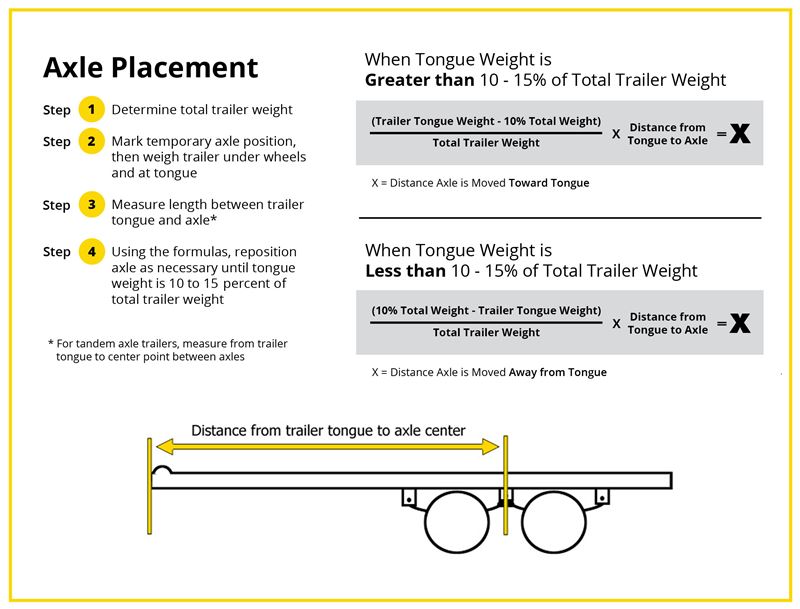
When Tongue Weight is Less than 10 to 15 Percent of Total Weight
If you find that your trailer's tongue weight is less than 10 to 15 percent of the total trailer weight, then the trailer axle will need to be moved further away from the trailer tongue, closer to the back of the trailer. To know how far back the axle needs to be moved, we want to subtract the trailer's tongue weight from 10 percent of the total weight. Then we will divide this number by the total weight. Then we will multiply this by the distance from the tongue to the axle.
For example, let's say we're building a trailer that has a total weight of 3,500 pounds. When weighed at the wheels and coupler, we find that the weight under the wheels is 3,400 pounds and the tongue weight at the coupler is only 100 pounds. With these weights, the trailer's tongue weight is only 2.9 percent of the total weight. The distance from the front of the trailer coupler to the axle center is 96 inches. Check out the equation below to see how much further back the axle needs to be moved.
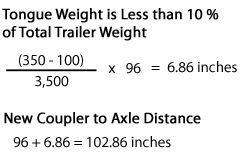
When Tongue Weight is Greater than 10 to 15 Percent of Total Weight
If you find that your trailer's tongue weight is greater than 10 to 15 percent of the total trailer weight, then the trailer axle will need to be moved closer to the trailer tongue and the front of the trailer.
Knowing how far forward to move the trailer axle takes an equation very similar the the one mentioned above. However, this time, we will subtract the 10 percent of the total weight from the actual tongue weight. Next, divide by the total trailer weight. Finally, multiply by the distance from the coupler to the trailer axle.
To give an example of this equation, let's say we have another trailer being built that has a total weight of 3,500 pounds. This trailer weighs 2,750 pounds under the wheels and 750 pounds at the end of the tongue. This trailer has a tongue weight that is 21.4 percent of the total trailer weight. The distance from the very front of the trailer, the coupler, to the center of the trailer axle measures 96 inches. Check out the equation below to see how far forward the trailer axle need to be moved.
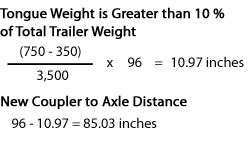
Related Articles:
Double-Eye Trailer Suspension System ReviewSlipper Spring Trailer Suspension System Review
Trailer Maintenance Schedule
Written by: Victoria B
Updated on: 12/19/2017

Sebastian C.
1/18/2024
Is tongue weight to be considered in this rule the weight of the trailer on the front of the front axis?

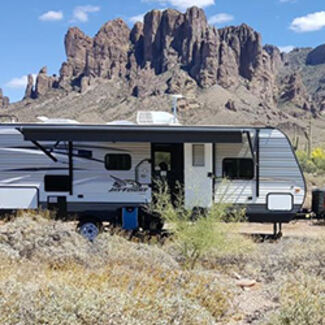
Nathan D.
5/14/2023
So how am I to determine the position of the axle if I'm still in the process of building the trailer? therefore i haven't finished and don't have a final weight, and can't take it to the scale because the axle isn't attached, because i know know the location to put it...

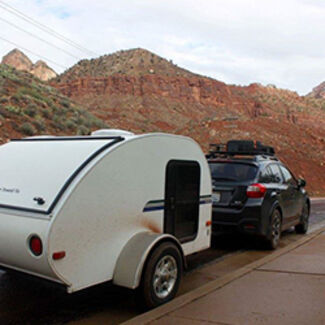

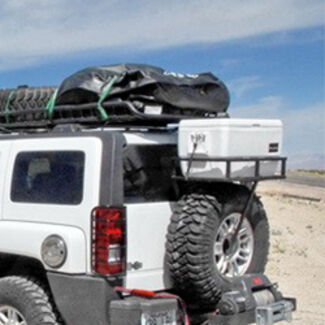
Jason
3/9/2023
I googled how much weight should sit on the trailer and the consensus is 60%. Now I read you saying 85%. That is not even close. Who do I beleave.


Ed S.
4/28/2022
Is there a rule of thumb regarding the distance the axle may be moved based on overall trailer length? I'm dealing with a 1500 lb trailer for 16' boat. There are very few things I can do to get to 10-15% tongue without moving the axle 12-20 inches forward.

Departments
Towing
- Trailer Hitch
- Fifth Wheel
- Gooseneck
- Towing a Vehicle
- Front Hitch
- RV Hitch
- ATV Hitch
- HD Truck Hitch
- Vehicle Wiring
- Brake Controller
- Ball Mounts
- Weight Distribution
Sports and Recreation
Trailer Parts
- Utility Trailer
- Boat Trailer
- Landscape Trailer
- Enclosed Trailer
- 5th/Camper Trailer
- Car Hauler
- Horse Trailer
Vehicle
Contact & Help

What our customers are saying:
"WOW! I am impressed! I called to place my order and real person answered, spoke perfect English, albeit a slight southern accent, and my order was sent within a day, shipped quickly and I had it a few days later. I saved over a hundred dollars over local and installed it my self. I cant imagine how that they could do any better. THANKS!"
Popular Vehicles
- Subaru Forester
- Ford F-350 Super Duty
- Ford F-250 Super Duty
- Chevrolet Silverado 1500
- Jeep Wrangler Unlimited
- Jeep Wrangler
- Ram 3500
- Toyota Highlander
- Ram 2500
- Chevrolet Silverado 2500
- Subaru Outback Wagon
- Chevrolet Silverado
- Dodge Ram Pickup
- GMC Sierra 2500
- Ram 1500
- Ford F-250 and F-350 Super Duty
- Jeep Grand Cherokee
- Toyota Tacoma
- GMC Sierra 3500
- Toyota Tundra
- Ford Escape
- More >>






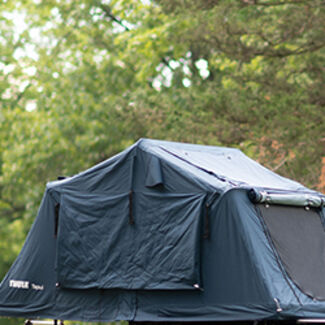

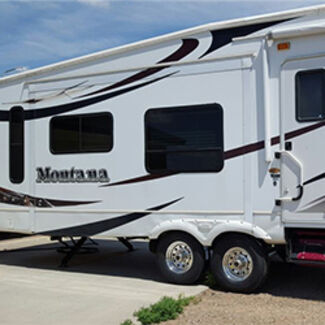



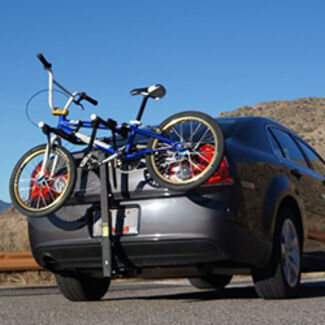

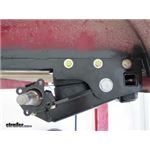

















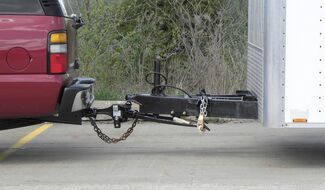





Luis A.
2/9/2024
Hello, do you know if there is a security standard that indicates that percentage 10.15%? Do you know any design standards for light trailers? (ISO, etc.). Finally, are those photographs from a book? I am very interested in learning about the subject of design.